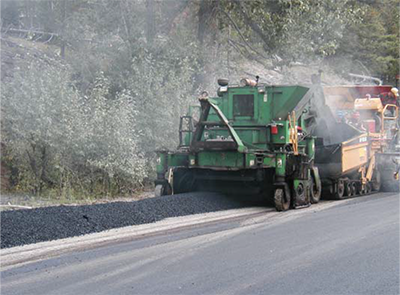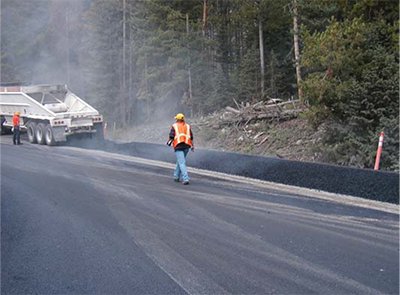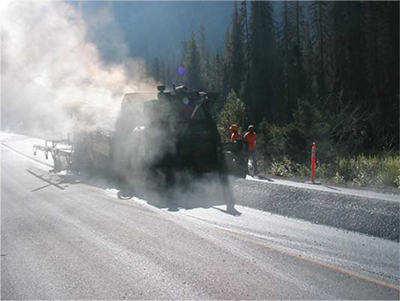Previous Chapter « Table of Contents » Next Chapter
The pavement structure was determined utilizing the DARWin pavement structure design program. The traffic loadings for a 20-year design life were estimated at 1,000,000 equivalent single axle loads (ESALs).
The pavement structure consisted of three layers. The subbase was constructed using recycled aggregates and pavement from the existing in-situ pavement structure. This material was placed and compacted to a depth of 6 inches (150 mm). The subsequent layer was a crushed aggregate base that was treated with 1% emulsified asphalt. This material was compacted to a finished depth of 8 inches (200 mm) and provided an excellent paving platform for the asphalt concrete pavement. The final layer was 4 inches (100 mm) of asphalt concrete pavement placed in two equal lifts. The plan quantity for the asphalt concrete was 31,300 tons (28,430 metric tons).

View larger version of Figure 2
Figure 2: Control mix placement.

View larger version of Figure 3
Figure 3: Depositing control mix in window.
It was desired to have an approximately equal amount of asphalt concrete placed by the three different methodologies: control (conventional hot mix), Advera WMA, and Sasobit WMA. A contract modification was initiated to provide for minor hot plant modifications to allow for introduction of the additives into the mixture. This modification covered the cost for delivery and support activities for the placement of the WMA mixtures. As part of the contract negotiations, it was desired that the change to the WMA mixtures would have minimal effect on the production. In other words, full and continuous production of the mixtures was desired, although not necessarily at the same production rate. Based on this criterion, the final placed quantities were not equal but provided for an equal number of production days for the two warm asphalt mixtures.

View larger version of Figure 3
Figure 4: Control mix paving operation.